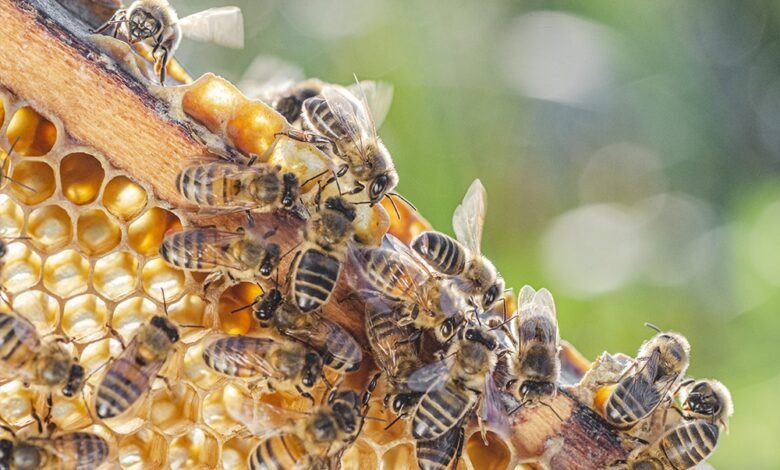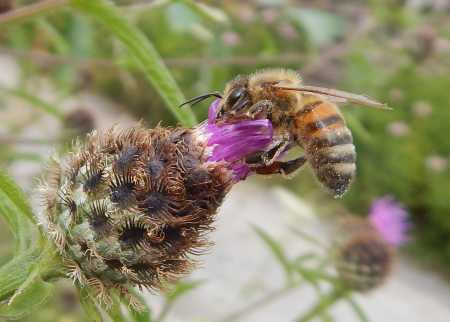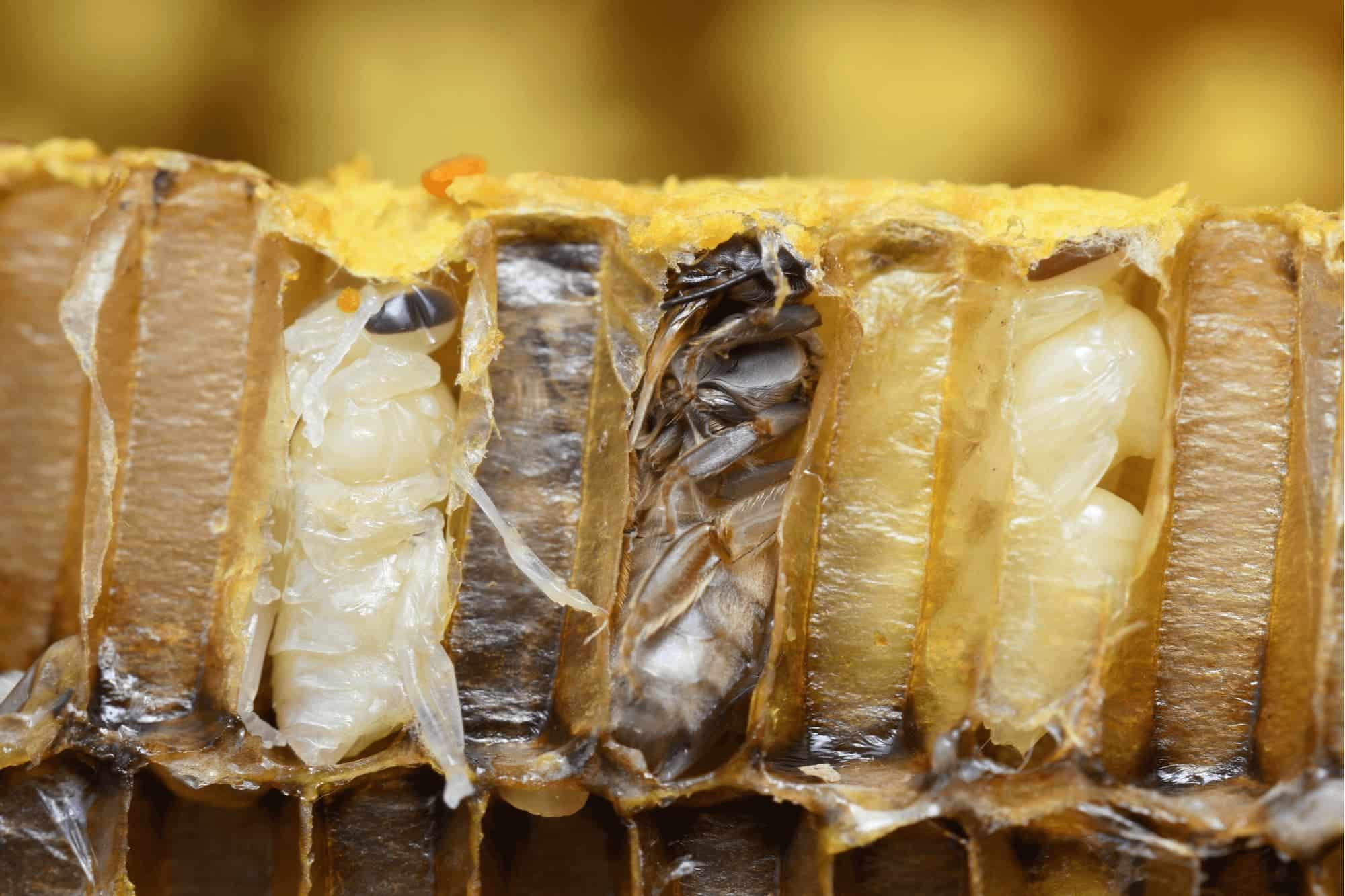How Long Do Bees Live? Unveiling Their Lifespan Secrets

How Long Do Bees Live? Bees typically live for about 6 weeks to 5 months, depending on their role within the colony.

Credit: www.buzzaboutbees.net
Introduction To Bees’ Lifespan
Bees have a relatively short lifespan, typically living anywhere from a few weeks to a few months. The lifespan of a bee varies depending on the type of bee and its role within the colony. Worker bees, for example, live for several weeks, while queen bees can live for several years.
Bees’ lifespan varies based on factors like species and environment.
Factors Influencing Lifespan
- Nutrition: Rich diet promotes longer life.
- Predators: Threats shorten bees’ lives.
- Climate: Extreme weather impacts lifespan.
Species Variation In Lifespan
Different bee species have varying lifespans:
| Bee Species | Lifespan |
|---|---|
| Honeybees | Up to 6 weeks |
| Bumblebees | Up to 28 days |
| Sweat Bees | A few weeks |
The Queen Bee: A Longevity Phenomenon
The queen bee is a longevity phenomenon, with a lifespan of up to five years. Worker bees live for about six weeks in summer. Drones typically survive for four to eight weeks.
Have you ever wondered how long bees live? Well, the lifespan of a bee varies depending on their role within the hive. Drones, which are male bees, only live for a few weeks. Worker bees, which are female bees, can live for several months. However, the queen bee is a longevity phenomenon with a lifespan that can exceed several years. Let’s explore the life of a queen bee and understand why she lives so long.
Life In The Royal Chamber
Queen bees are the only sexually developed female bees in the hive. They are responsible for laying eggs that will hatch into the next generation of bees. Queen bees are pampered and well-fed by the worker bees, which attend to their every need. They are also kept in a separate chamber within the hive known as the royal chamber. This chamber is larger and better ventilated than other parts of the hive, ensuring that the queen bee is comfortable and has access to fresh air.
Diet And Longevity
One of the reasons why queen bees live so long is due to their special diet. While worker bees feed on nectar and pollen, queen bees are fed with royal jelly, a protein-rich secretion produced by young worker bees. Royal jelly contains all the essential nutrients required for the queen bee to thrive, including vitamins, minerals, and amino acids. The high nutritional content of royal jelly helps the queen bee to maintain good health and extend her lifespan.
In conclusion, the queen bee is a longevity phenomenon, living several years longer than other bees in the hive. Her special diet, combined with a pampered lifestyle, ensures that she remains healthy and active throughout her life. Understanding the life of a queen bee can help us appreciate the amazing world of bees and the vital role they play in our ecosystem.
Worker Bees: The Labor Force
When it comes to the intricate workings of a beehive, one cannot overlook the vital role played by the worker bees. These industrious insects are the backbone of the colony, diligently carrying out various tasks to ensure the survival and success of their hive. In this section, we will delve into the fascinating roles and responsibilities of worker bees, as well as explore the correlation between their lifespan and the work they perform.
Roles And Responsibilities
Worker bees are the female bees in the colony who do not reproduce but instead dedicate their lives to serving the hive. These diligent workers are responsible for a myriad of essential tasks, each contributing to the overall functioning and prosperity of the colony.
The primary role of worker bees is to forage for food. They venture out of the hive in search of pollen and nectar, visiting numerous flowers and plants in the process. As they collect pollen, they inadvertently transfer pollen grains from the male parts of one flower to the female parts of another, facilitating the essential process of pollination.
Worker bees are also responsible for constructing and maintaining the hive. They use beeswax produced from their own bodies to build the intricate hexagonal cells that form the honeycomb structure. These cells serve as nurseries for the growing brood, storage units for food, and even as communication platforms within the hive.
In addition to their construction duties, worker bees also serve as caretakers of the colony. They feed the brood, clean the hive, regulate temperature and humidity, and even defend the hive against intruders.
Lifespan And Work Correlation
How Long Do Bees Live? The lifespan of a worker bee is influenced by the type of work they perform within the hive. The tasks undertaken by worker bees change as they age, and this progression in responsibilities impacts their longevity.
During the first few weeks of their lives, worker bees primarily engage in tasks within the hive, such as cleaning, nursing the brood, and producing beeswax. This period of intensive labor is followed by a transition to foraging duties, which expose them to various environmental factors and potential dangers.
The demanding nature of foraging, coupled with exposure to predators, pesticides, and other hazards, significantly reduces the lifespan of worker bees. On average, forager bees live for only a few weeks, while those engaged in hive tasks can live for several months.
It is important to note that the lifespan of worker bees can also be influenced by genetic factors, environmental conditions, and the overall health of the colony. However, the correlation between the type of work performed and the lifespan of worker bees remains a significant aspect of their lifecycle.
In conclusion, the worker bees in a beehive form the labor force, diligently fulfilling a range of essential roles and responsibilities. Their tireless efforts contribute to the survival and prosperity of the colony, making them an indispensable part of the intricate social structure within the hive.

Credit: www.bensbees.com.au
Drone Bees: Short-lived Males
Drone bees, the short-lived males in a bee colony, have a relatively brief lifespan compared to other bees. They typically live for only a few weeks before they die.
When we talk about the lifespan of bees, the drone bees are the shortest-lived males in the beehive. Drones are the male bees that are responsible for mating with the queen bee. They are reared during the spring and summer months when the colony’s resources are abundant. However, their lives are short-lived as they die soon after mating. In this section, we will discuss the purpose of existence and the factors leading to their demise.
Purpose Of Existence
The primary purpose of drone bees is to mate with the queen bee. Drones are larger than worker bees and have big eyes to help them find the queen bee during mating flights. They do not have stingers and do not collect nectar or pollen like worker bees. Their sole purpose is to mate with the queen bee and fertilize her eggs.
Factors Leading To Their Demise
Drones have a short lifespan and die soon after mating. The factors that lead to their demise are mating exhaustion, expulsion from the hive, or starvation. After mating, the drone’s reproductive organ is ripped off, causing him to die. The queen bee may also expel the drones from the hive during the winter months when resources are scarce. Drones that are unable to find food or are too weak to fly may also starve to death.
In conclusion, drone bees are short-lived males that play an essential role in the beehive’s reproduction. Their primary purpose is to mate with the queen bee, and they die soon after mating. Factors leading to their demise include mating exhaustion, expulsion from the hive, and starvation.
Seasonal Effects On Bees’ Lifespan
Seasonal effects play a significant role in the lifespan of bees. The challenges of winter and the strategies for survival in summer greatly impact the longevity of these vital pollinators.
Winter Challenges
Winter poses significant challenges to bees’ survival. The cold temperatures limit foraging opportunities, and food scarcity becomes a primary concern. Bees form a cluster inside the hive to maintain warmth and conserve energy, relying on stored honey for sustenance. Survival through winter is critical for the overall health of the bee colony.
Summer Survival Strategies
In contrast to winter, bees employ various strategies to ensure survival during summer. The abundance of flowers and nectar allows for ample foraging opportunities. Bees also regulate the temperature inside the hive, preventing overheating. Additionally, the increased daylight hours provide more time for pollen collection and hive maintenance.
Human Impact On Bees’ Lifespan
Bees play a crucial role in our ecosystem as pollinators, aiding in the reproduction of plants and ensuring food production. However, their lifespan is greatly affected by human activities, such as the use of pesticides and chemicals, as well as conservation efforts. In this section, we will explore the impact of these factors on the lifespan of bees.
Pesticides And Chemicals
The use of pesticides and chemicals in agriculture has had a detrimental effect on bees’ lifespan. These substances are designed to eliminate pests, but unfortunately, they can also harm beneficial insects like bees. Pesticides like neonicotinoids have been linked to bee mortality, affecting their immune system, navigation abilities, and reproductive health.
Additionally, certain chemicals used in beekeeping practices, such as miticides and fungicides, can accumulate in the hive, leading to long-term health issues for bees. These chemicals can disrupt the delicate balance within the hive, impacting the lifespan of individual bees and the overall colony.
Conservation Efforts
Recognizing the importance of bees for our ecosystem, conservation efforts have been undertaken to protect their populations and improve their lifespan. These efforts include:
- Creating bee-friendly habitats: Providing a diverse range of flowering plants and nesting sites can support bees’ survival and increase their lifespan.
- Promoting organic farming: Encouraging the use of natural pest control methods and reducing the reliance on synthetic chemicals can minimize the negative impact on bees’ health and lifespan.
- Education and awareness: Raising awareness about the importance of bees and their role as pollinators can lead to more sustainable practices and better protection of their habitats.
Conservation organizations, beekeepers, and individuals all play a vital role in implementing these initiatives to safeguard bees and extend their lifespan.
The Mystery Of Bee Longevity
Genetic Secrets
Bees’ longevity is influenced by their genetic makeup.
Research And Discoveries
Ongoing research unveils the secrets behind bees’ long lifespan.
Credit: www.quora.com
Preserving The Bee Population
Bees live for about 5-6 weeks during the summer, while the queen bee can live for 2-3 years. It’s crucial to focus on preserving the bee population to ensure the longevity of these vital pollinators.
Creating Bee-friendly Environments
Planting diverse flower gardens to attract bees.
Avoid using pesticides harmful to bees.
The Role Of Beekeeping
Beekeepers support bee populations through proper care.
Educate the community about the importance of bees.
Bee populations are declining due to various factors such as pesticides, habitat loss, and climate change. It is crucial to take action to protect these vital pollinators. By creating bee-friendly environments and promoting responsible beekeeping practices, we can contribute to the preservation of bee populations.
Creating Bee-friendly Environments
- Plant diverse flower gardens to attract bees.
- Avoid using pesticides harmful to bees.
The Role Of Beekeeping
- Beekeepers support bee populations through proper care.
- Educate the community about the importance of bees.
Frequently Asked Questions
How Long Do Bees Live In The Wild?
Bees in the wild typically live for 1 to 2 months during the summer. Worker bees, responsible for various tasks, have the shortest lifespan, while the queen bee can survive for several years.
What Factors Affect The Lifespan Of Bees?
The lifespan of bees is influenced by various factors such as the availability of food sources, predation, diseases, and environmental conditions. Additionally, the role of the bee within the colony can also impact its lifespan.
Do All Bees Have The Same Lifespan?
No, the lifespan of bees varies based on their role within the colony. Worker bees, who perform numerous tasks, have the shortest lifespan of a few weeks, while queen bees can survive for several years due to their reproductive function.
How Does The Lifespan Of Bees Impact The Ecosystem?
The lifespan of bees plays a crucial role in pollination, which directly impacts the ecosystem and food production. The short lifespan of worker bees emphasizes the importance of a constant supply of healthy bees to sustain pollination and ecological balance.
Conclusion
The lifespan of bees varies depending on their role within the colony. Worker bees typically live for a few weeks during the busy summer season, while queen bees can survive for several years. Understanding the lifespan of bees is crucial for the conservation of these essential pollinators.





